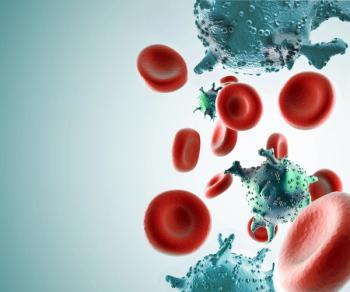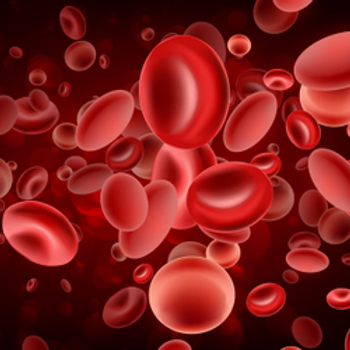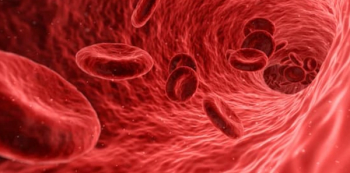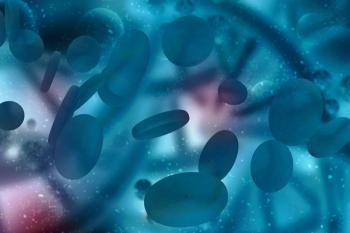
68Ga-FAPI-46 PET Acts as Biomarker for FAP-Positive Cancers
68Ga-FAPI-46 PET’s SUVpeak was highest in patients with pancreaticobiliary cancer, sarcoma, lung cancer, and esophageal/gastrointestinal cancer.
68Ga-FAPI-46 PET met the primary end point of positive predictive value (PPV) in the detection of fibroblast activation protein (FAP)–expressing cancer in patients with various tumor types, according to data from a single-arm phase 2 trial (NCT05160051) shared at the
On a per-patient basis, 68Ga-FAPI-46 PET analysis for the detection of immunohistochemical FAP-positive tumors revealed that, of 114 patients who were PET positive, 103 patients were immunohistochemistry (IHC) positive and 11 were IHC negative; of 13 patients who were PET negative, 9 were IHC positive and 4 were IHC negative. The PPV was 0.90 (95% CI, 0.84-0.95), and the standard error (SE) was 0.92 (95% CI, 0.85-0.96).
On a per-region basis, of 109 patients who were PET positive, 100 were IHC positive and 9 were IHC negative; of 18 patients who were PET negative, 12 were IHC positive and 6 were IHC negative. The PPV was 0.92 (95% CI, 0.85-0.96), and the SE was 0.89 (95% CI, 0.82-0.94). The study investigators added that, for the question of PPV, 68Ga-FAPI-46 PET was a biomarker for FAP expression.
In a region-based analysis for local, lymph node, visceral, and bone, when a simplified visual FAP scale was applied for FAP expression, the highest standardized uptake value (SUV)peak correlated with the corresponding FAP expression score (r = .33; P <.001).
Two examples were provided: a patient with lymphoma had 10% or less of cells that were FAP positive and an SUVpeak of 3.4, and another patient with sarcoma had greater than 50% of cells that were FAP positive and an SUVpeak of 15.7.
A tumor uptake analysis showed an overall SUVpeak of 8.4 (± 6.2), and per tumor type, the SUVpeak was5.7 (± 5.5) for genitourinary cancers, 12.2 (± 6.7) for sarcoma, 10.4 (± 3.4) for lung cancers, 5.9 (± 4.7) for hematological cancers, 12.7 (± 7.1) for pancreaticobiliary cancers, 9.9 (± 4.3) for esophageal/gastrointestinal cancers, and 7.5 (± 6.1) for other cancers.
The inter-reader reproducibility based on 3 independent, blinded nuclear medicine physicians was substantial to almost perfect, as inter-reader agreement was found on a per-patient and per-region basis. The patient score was 0.71 (Fleiss’ kappa, 0.62-0.80), and by region, the scores were 0.82 (Fleiss’ kappa, 0.73-0.91) for primary tumor, 0.83 (Fleiss’ kappa, 0.73-0.92) for lymph nodes, 0.72 (Fleiss’ kappa, 0.63-0.81) for visceral metastases, and 0.72 (Fleiss’ kappa, 0.63-0.81) for osseous metastases.
“The primary end point was met: PPV of 68Ga-FAPI-46 PET for the detection of FAP-expressing cancer reached [75% or higher],” wrote presenting study author Kim Pabst, MD, of the Department of Nuclear Medicine of West German Cancer at University Hospital Essen in Essen, Germany, and coauthors, in the presentation. “68Ga-FAPI-46 PET serves as a biomarker for FAP-positive tumors.”
A total of 155 patients received 68Ga-FAPI-46 PET/CT in the study. Of them, 146 patients received surgery or biopsy within 8 weeks prior to or after PET/CT, and 9 did not. Of the 146 patients who did, 127 had FAP immunohistochemical analysis performed; 112 were FAP IHC positive, and 15 were FAP IHC negative.
Eligible patients had proven or suspected malignancy at initial staging or restaging, at least 1 detectable tumor lesion with any diameter greater than 1 cm, no prior external beam radiation or systemic tumor therapy within 1 month, and intended or performed biopsy or surgery within 8 weeks of enrollment. The immunohistochemical analysis was done by 1 independent, blinded pathologist.
The trial’s primary end point was the per-region and per-patient PPV for the detection of immunohistochemical FAP-positive tumor lesions as confirmed by histopathology. Secondary end points included sensitivity, SUVpeak, inter-reader reproducibility, and the association between immunohistochemical FAP expression and 68Ga-FAPI-46 PET SUVpeak.
The median age of patients was 62 years (range, 20-89), and 63% of patients were male; the purpose of 68Ga-FAPI-46 PET/CT was staging at initial diagnosis in 64% and restaging in 36%. The most common tumor types were genitourinary (34%), sarcoma (18%), lung (10%), hematological (8%), pancreaticobiliary (8%), esophageal or gastrointestinal (6%), and other types (17%).
Reference
Pabst K, Bartel T, Sandach P, et al. 68Ga-FAPI-46 PET for imaging of FAP-expressing cancer: results from a prospective, single-arm, interventional phase 2 clinical trial. Presented at 2025 SNMMI Annual Meeting; June 21-24, 2025; New Orleans, LA.
Newsletter
Stay up to date on recent advances in the multidisciplinary approach to cancer.

















































































